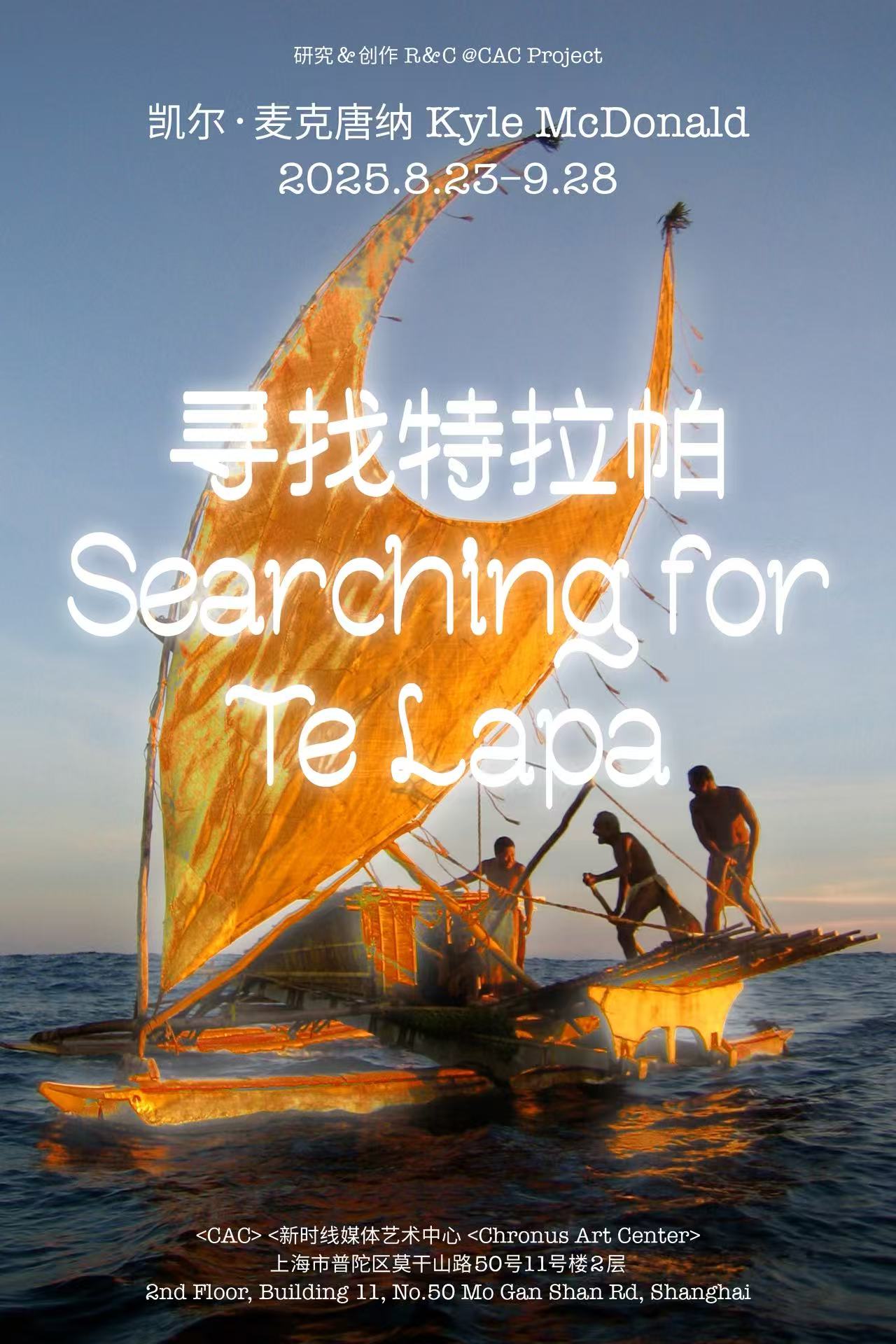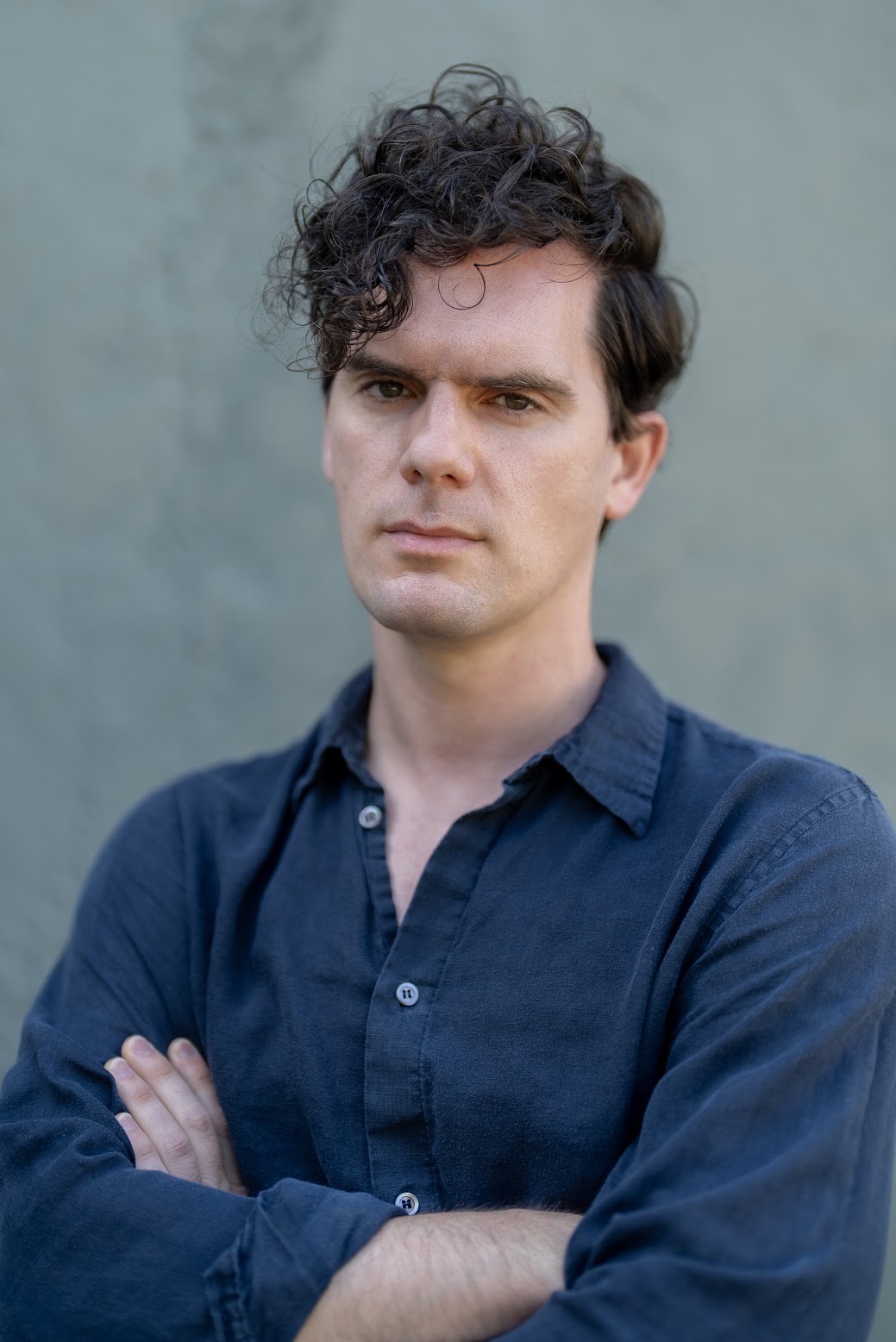R&C @CAC Project | Searching for Te Lapa
Exhibition Opening:
2025.8.23 (Sat.) 14:00-18:00
Hours:
11 am – 6 pm (last entry 5:30 pm)
Wednesdays – Sundays
Free Admission
CAC Project 3rd Installment
Searching for Te Lapa
2025.8.23 – 9.28
Chronus Art Center
2nd Floor, Building 11, No.50 Mo Gan Shan Rd, Shanghai
Chronus Art Center (CAC) is pleased to present Searching for Te Lapa, the third residency outcome of the Research & Creation (R&C) @CAC Project, on view from August 23 through September 28, 2025.
Chronus Art Center (CAC) is pleased to present Searching for Te Lapa, the third residency outcome of the Research & Creation (R&C) @CAC Project, on view from August 23 to September 28, 2025.
The exhibition traces artist Kyle McDonald’s fieldwork in Polynesia, where he investigates the mysterious phenomenon known as Te Lapa. In collaboration with Taumako navigator Luke Vaikawi, anthropologist Dr. Marianne “Mimi” George, and local communities, McDonald has been developing and applying advanced imaging technologies to explore a faint flash of light believed to originate from land and used for traditional navigation, yet never successfully recorded on camera. Passed down through generations, this ancestral signal forms part of Taumako’s navigational knowledge. The team built one of the world’s most sensitive low-light systems and undertook multiple sea voyages in search of the light. Though it ultimately eluded detection, the process unfolded into a non-instrumental form of companionship and presence.
Te Lapa remains outside the bounds of modern scientific taxonomy. Yet within Pacific Islander oral traditions, it endures as a messenger and a form of relational knowledge that connects the living with their ancestors. It is not known through repeatable metrics but becomes perceptible only in moments of attuned invocation. For islanders, appearance is not the production of an image, but the awakening of an intimate relation.
Even with the most refined tools, Te Lapa continues to exceed the frame of technical representation. Its timing and trajectory diverge from the expectations of recording devices, and the closer one attempts to approach it through precision, the more it draws attention to what cannot be fixed. Within this delay, simulation becomes less a tool for replication than a practice of sensing—one that shapes a shared vocabulary with a form of knowledge that moves according to its own rhythm.
In response, the artist draws on the navigator’s accounts, vocal tones, and lived memories to reconstruct the rhythm and path of Te Lapa. The exhibition sets aside the impulse to reduce its subject to a phenomenon for classification, foregrounding instead a form of knowledge that strains against the norms of visibility, shaping an alternative ethic of perception through the very friction of its encounter.
The meaning of Te Lapa lies in gently undoing the illusion that vision marks the beginning of knowledge. Orientation does not begin with what is seen; it may emerge from a response granted by the ancestors, subtle and precise. What seems like near-absence reveals a fullness, saturated with ethical weight. It evades the center of the gaze, residing instead within a structure of attunement. What it answers is not the eye, but the call. The exhibition follows this still-unfolding rhythm, inviting viewers into a nocturnal drift where perception is guided not by clarity but by a trust that precedes seeing.
Under the Bio-Geo-Symbio research framework, this project seeks to articulate an interdependent mode of understanding shaped by the convergence of perception, technological mediation, and ancestral epistemologies.


Kyle McDonald
Kyle McDonald is an artist working with code. He crafts interactive and immersive audiovisual installations, performances, and new tools for creative exploration—building new communities and collaborations along the way. He uses techniques from computer vision and machine learning to ask questions about how we connect—and to imagine a shared future. Previously adjunct professor at NYU’s ITP, member of F.A.T. Lab, community manager for openFrameworks, he also consults for corporate clients and leads workshops on new technologies. Work commissioned, collected, and shown internationally, including: the V&A, NTT ICC, Ars Electronica, Sonar, and Eyebeam.